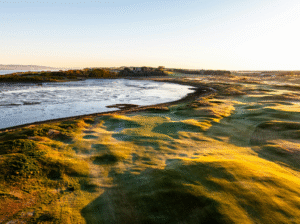
California Golf Club is true to its name, pure golf is the ethos of this members only club. Founded in 1918, Cal Club (as it’s known within the global golf community) was originally located in the San Francisco town of Ingleside. In 1924, the club purchased a 425 acre parcel eight miles further south on the peninsula. The newly acquired land featured rolling terrain that was once a part of the original Baden Farm located in San Mateo County.

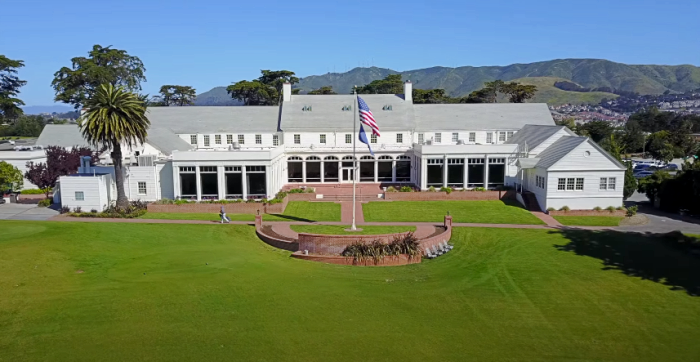
ORIGINAL DESIGN / EVOLUTION:
To say a few course designers have had their hands on the property at one time or another is an understatement. A.Vernon Macan and Willie Locke were architects of the original routing and design when ground-breaking began in 1924. The course opened on May 26, 1926, but just two years later (just as work was about to commence 120 miles south on Cypress Point Club), Dr. Alister MacKenzie and Robert Hunter of the American Golf Company were brought in to redesign several bunkers and a few greens.

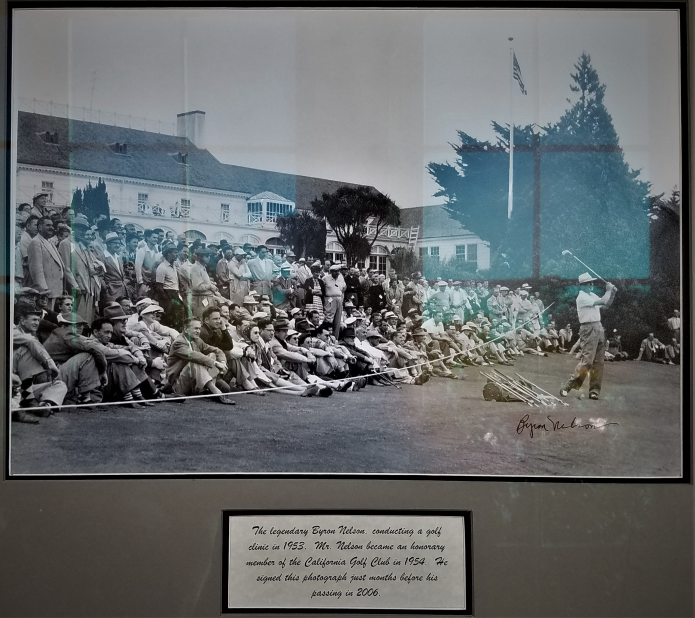

In the mid 60’s the state of California enforced an action of eminent domain to create a roadway just off of the new interstate 280 – west of the course. Around that same time, Robert Trent Jones Sr made changes to the course that only added to the club’s lost identity. After decades adrift, the club found its way through the leadership of long- time member Al Jamieson (committee chair & club President during the days of reckoning in 2005 and 2006 ).

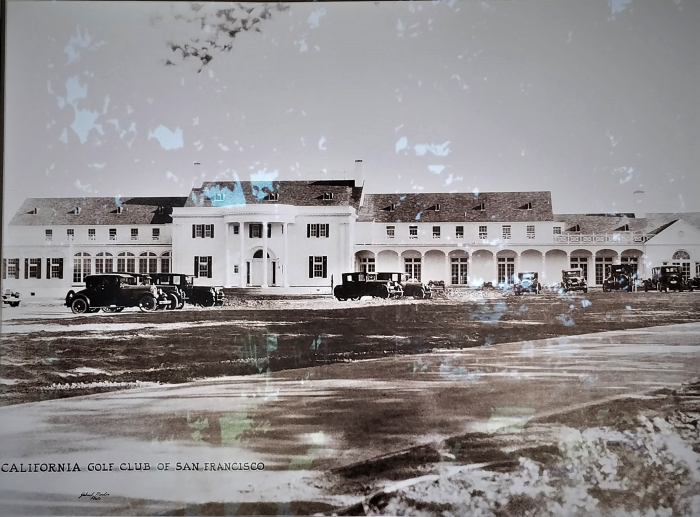

In 2005, course Superintendent Thomas Bastis was dealing with an uncontrollable nematode problem and the club decided it was the right time to embark on a search for an architect to do some partial renovation work and upgrades to the greens. While conducting several interviews and meetings over a 12 month span, some sage wisdom was imparted by 1964 U.S Open Champion (and former club member since 1949) Ken Venturi who told the project committee, “Gentleman, you only get one chance to do this right.” Venturi’s influence on the club’s old guard and Jamieson’s leadership formed a coalition that championed the cause for a complete renovation/restoration.
Kyle Phillips was the architect chosen for his big picture vision of the finished project and in 2007 he began a comprehensive 16-month transformation of the entire property. The project included discarding the old eighth hole, creating a new driving range, the ambitious re-purposing of a 17-acre hill that was previously used for organic refuse – which is now the seventh hole and the restoring of the 13 original holes to their golden age identity (complete with MacKenzie-Esque bunkers). Phillips left no detail to chance, he was able to unlock the angles and wide corridors by initiating the removal of thousands of trees that over time had strangled site lines and blocked the crisp Bay Area winds. Another daunting endeavor was bringing in five thousand truckloads of sand that was essential to change the soil profile, solidifying Phillips’ masterful plan of creating a firm and fast (fine Fescue) playing surface. Coupled with pure Bentgrass greens, the signature of the club since its reopening has been its pure and lean “feed the ball” links type conditions.
The union of Kyle Phillips’ vision and Al Jamieson’s club presence was nothing short of a golf super nova. A project this worthy only succeeds long term with a group of highly talented personnel that tends to the land. Fortunately, Cal Club was already equipped with a duo of California’s finest – Thomas Bastis and Joshua C.F Smith (their young Jedi apprentice Javier Campos was just beginning his journey at the time). Bastis notes that it took the course legitimately 3 years to mature. “The entire course was hydroseeded, not a stitch of sod on the property during the renovation,” said Bastis. Seed germinates in random sequences and in an irregular manner and as a result the front nine was closed to carts until the grow -in was complete. During that time, the club made serious inroads in changing the culture to a walking club. Cal Club moved towards recruiting new members that exhibited a high golf I.Q and as Bastis noted, “Just because someone plays a lot of golf, doesn’t mean they’re an educated and informed golfer. It just means you play a lot of golf.” Today, the club is a walking club with a solid caddie staff. As a result of the cumulative efforts of all parties, California Golf Club has gone from relative obscurity to becoming a Top 50 course in the World.

The Course
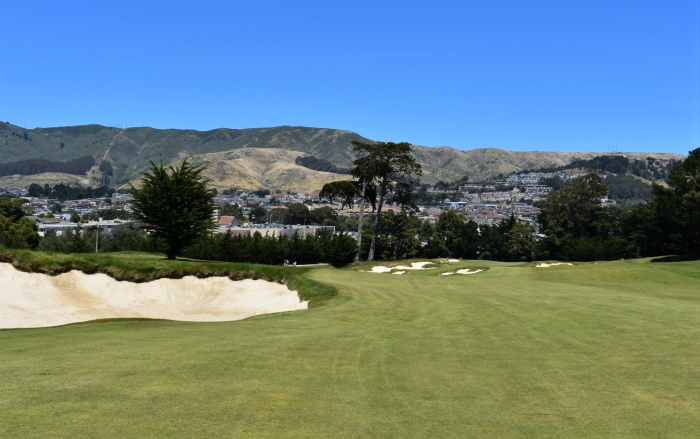
Just steps from the pro shop, here’s the view from the 535-yard par 5 opener. The Championship Venturi tees play 7,216 yards. Carry, pull a trolley or take one the outstanding caddies. This is one of the best strolls in the game.The first fairway runs downhill to the farthest northeast part of the property, encouraging aggressive play right out of gate. San Bruno Mountains provide the scenic backdrop.

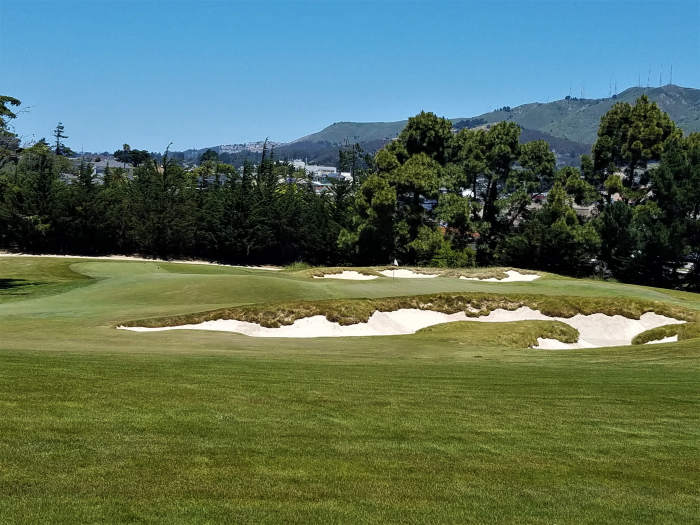
While the first two thirds of the opener have you seeing opportunity, the green complex is a handful to take in. Swales, hollows, mounds and MacKenzie style bunkers guard the front and back, turning this green light special into an examination of finesse and precision.

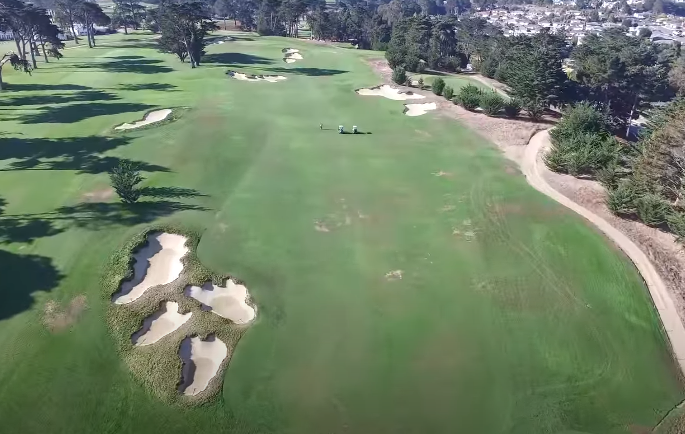
Former Cal Club Superintendent Thomas Bastis captured this drone view of the second (shortly after the renovation).

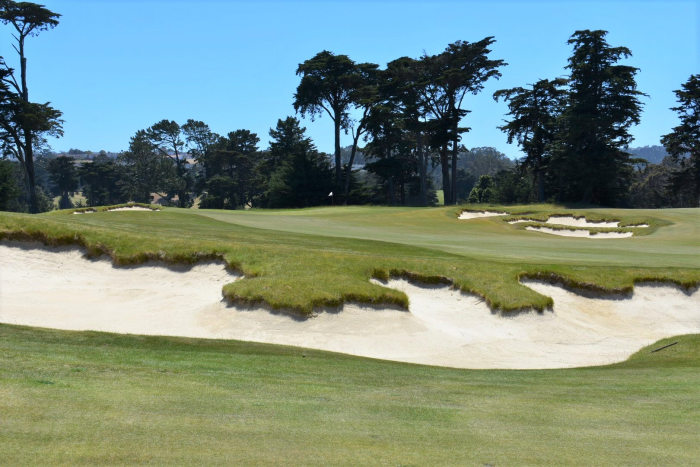
Both views of the 448 yard par 4 second illustrate the superb re-creation of MacKenzie’s bunker designs by Phillips and his team, but also the detail performed daily by Javier Campos and his Agronomy staff.

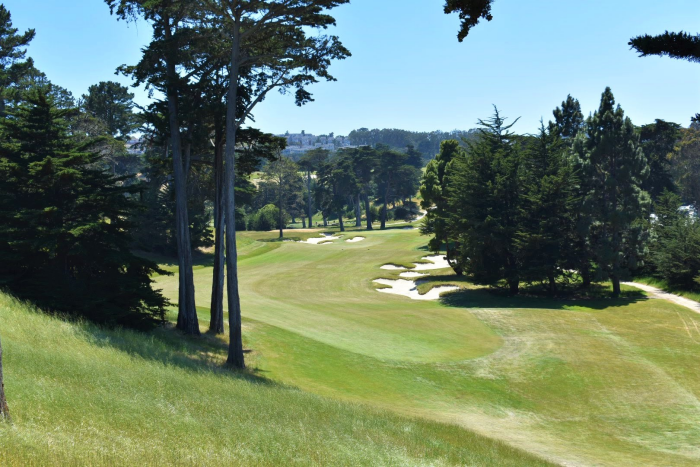
The 437 yard third is a downhill left to right stunner that encourages a fade off the box and right to left approach.


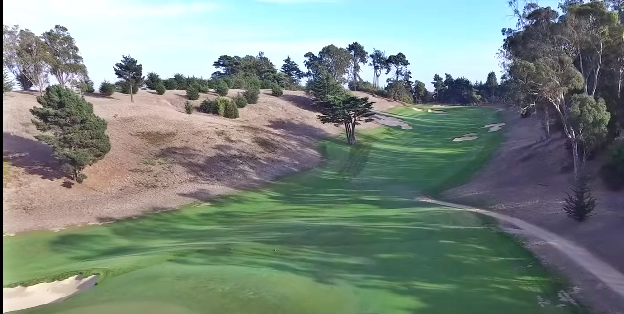
Like many golden age gems, tees and greens are in very close proximity at Cal Club (as seen here on the short 346 yard par 4 fifth). Not only is this the shortest par 4 of the routing, but it’s also the most secluded hole. Playing just a bit longer than the yardage as it gently climbs within a mini- valley.


This view from approximately 50 yards short of the back left hole location shows the tight fine fescue lies that require your focus. Local knowledge reveals a backboard just beyond this back left hole location.

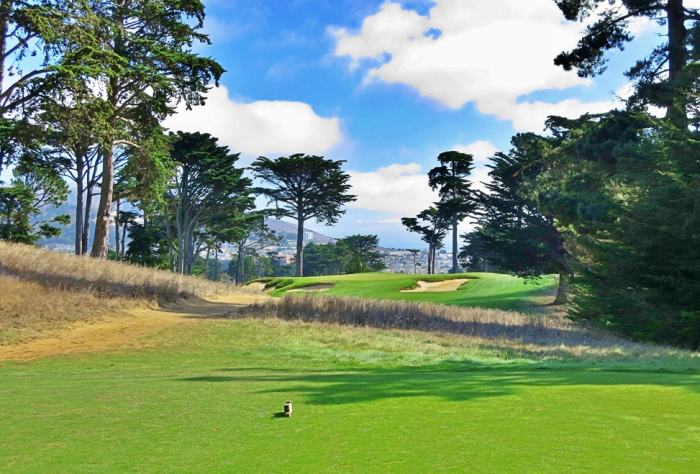
The mid-length par 3 sixth sits on high elevation with a clear view of the mountains and the Bay Area suburbs below. Deep bunkers protect the front left and the higher sloping right side. The right to left influence gives this beauty a redan-ish feel.

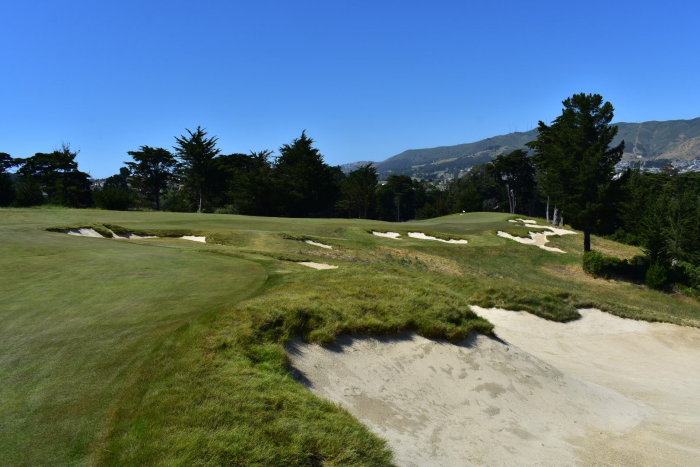
The tee view on the seventh reveals the most dramatic Phillips original on the course. Once used for organic refuse, Phillips converted the site to a spectacular downhill 411 yard Cape hole. Sloping dramatically left to right, a series of well-positioned bunkers guard the bold line to cut the corner. The ground game is a very viable option here to feed the shot along the slope to an open entry green.

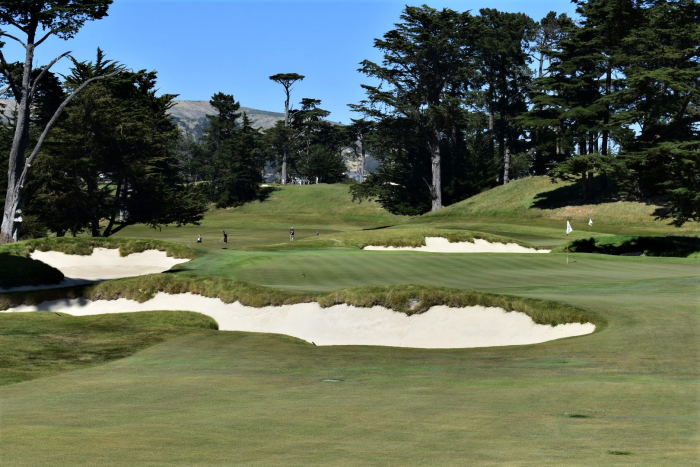
The green complex on the 241 yard downhill eighth features a large surface that requires your full attention. No auto two-putt here.

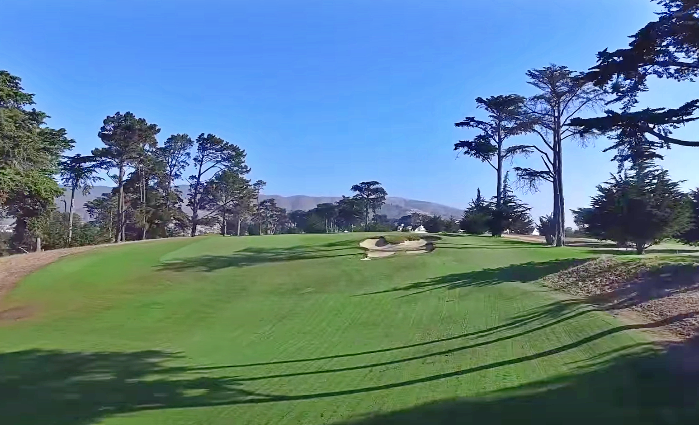

The 419 yard ninth features a blind tee shot.
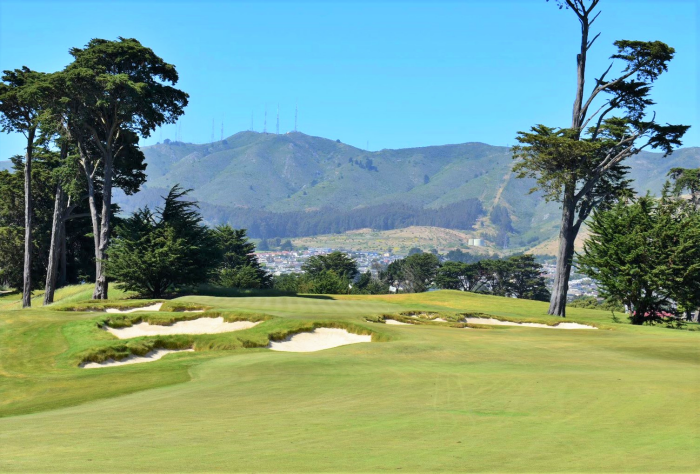
The approach on the ninth is another that rewards the shot that plans for the left to right pitch of the green.

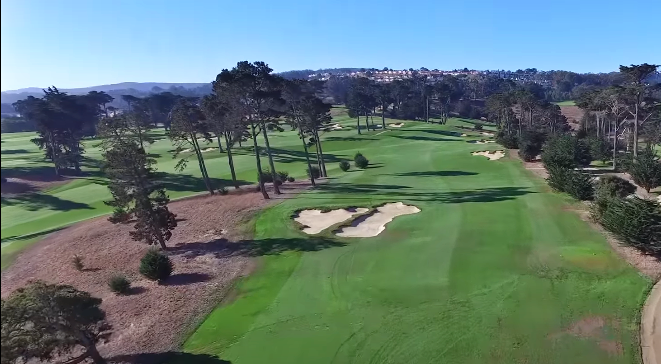
An overhead of the 412 yard tenth is another example of how the land flows at Cal Club. Notice the fairway bunkers and a centerline mow pattern that moves right to left, then trundles downhill and swings back in the opposite direction.

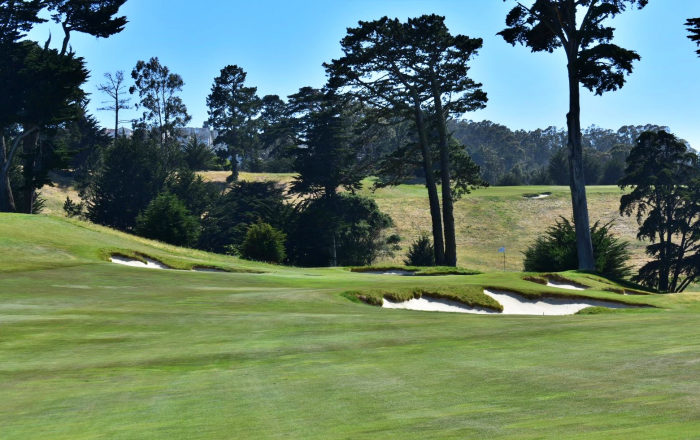
Tough to see the back right pin here on the tenth where the green gently slopes away from the elevated eleventh tee (left).


The 407 yard eleventh is the essence of ground game options at Cal Club.

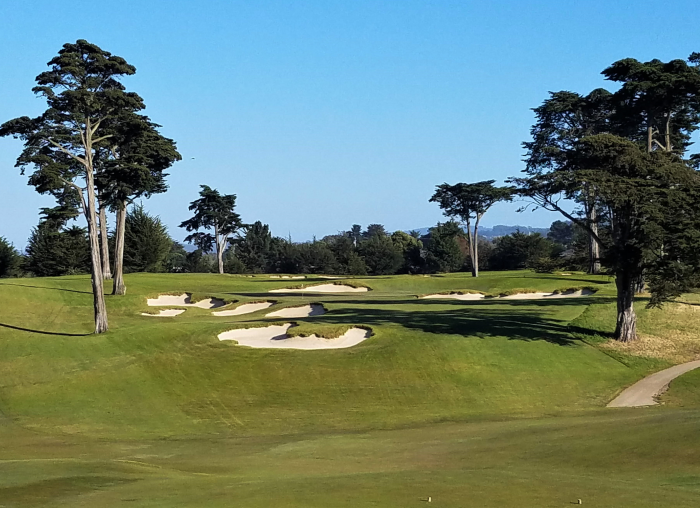
The 232 yard twelfth is the most savage one-shotter on the property, nothing less than your best will do here.

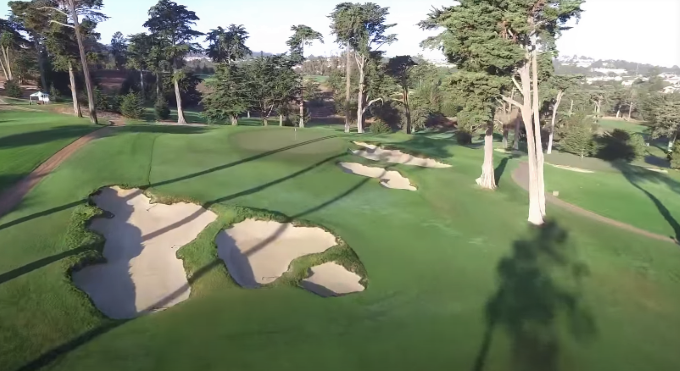
The green on 433 yard thirteenth, note the difference in elevation from the tenth green down on the right.

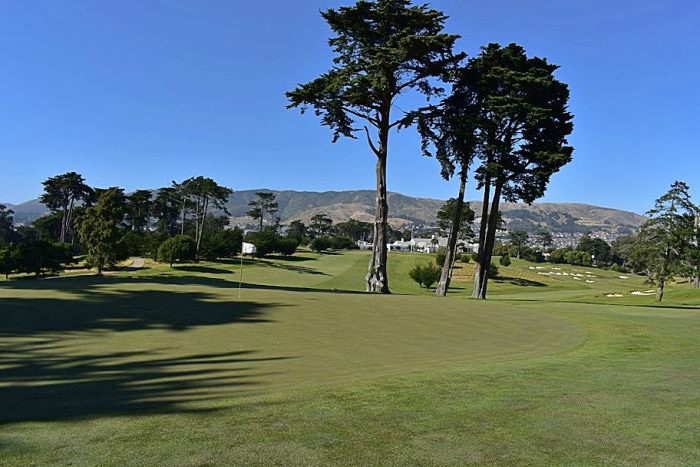
The diminutive surface on the 13th is among the toughest to hit in regulation at Ca Club, late afternoon crisp Pacific winds pack a punch.

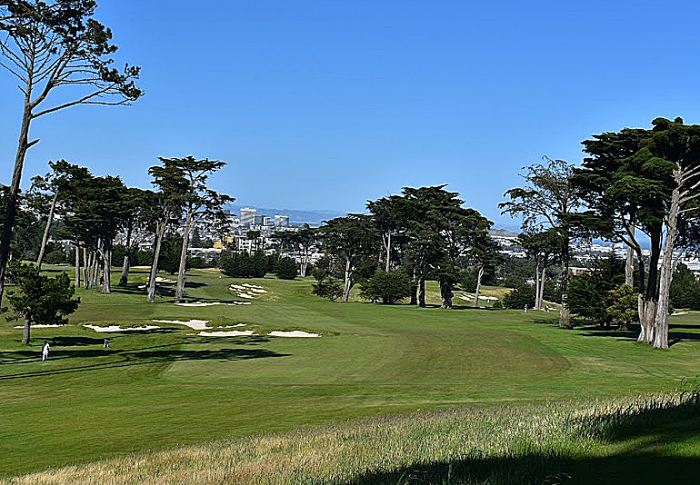
Cypress dot the landscape throughout the property, but Phillips chose wisely keeping the foliage that enhances the beauty of the routing but rarely comes into play. The fourteenth is the third leg of the back nine ball strikers exam and is the longest par 4 on the property at 479 yards. Although the routing is mostly a back and forth sequence on the inward side, it doesn’t lack in variety.

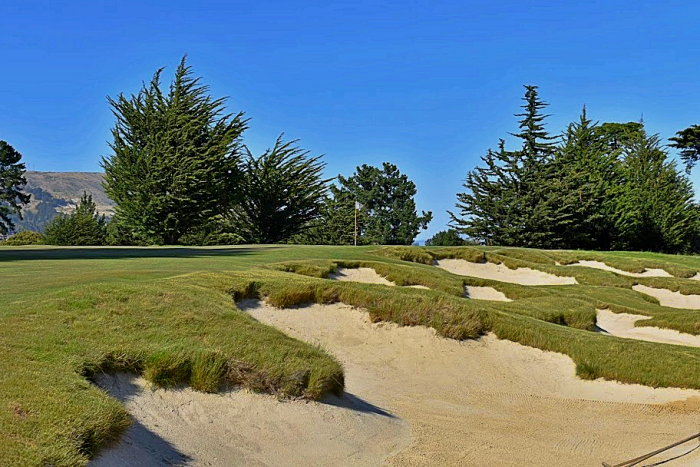
The greenside bunker here at fourteen is the most intricate at Cal Club and my personal favorite on the course.

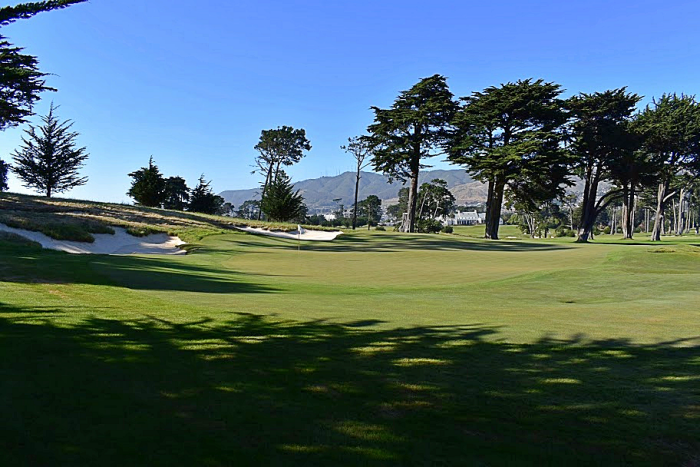
The par 5 fifteenth green


The charming downhill 133 yard sixteenth. Just a precise wedge to this well protected green, easy to make 2, easy to make 5. Looking over the green is the seventeenth tee box that features a line of play across the edge of the green. Jay Blasi noted that such a design is a golden age trait that would likely never get built on a modern day design.

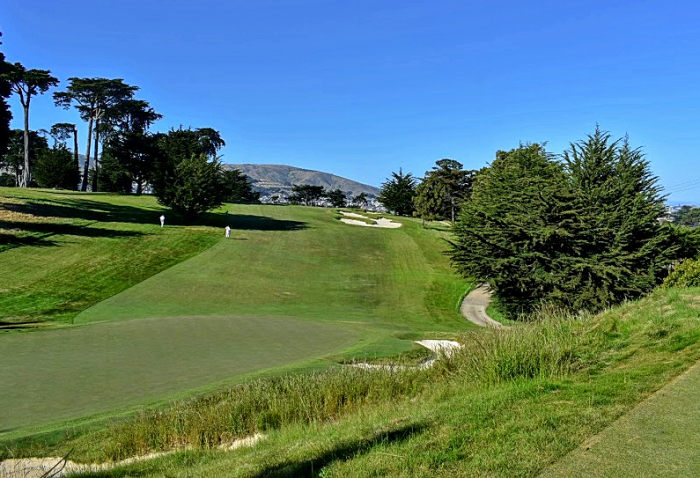
Par 5 seventeenth tee view. A tee box that has players launching tee shots over the preceeding green complex would likely never be designed or constructed in the modern era. A very unique feature at Cal Club.


The approach on the 567 yard penultimate hole. Playing generously downhill, a speed slot just short left of the green feeds the ball right to this front right flag.

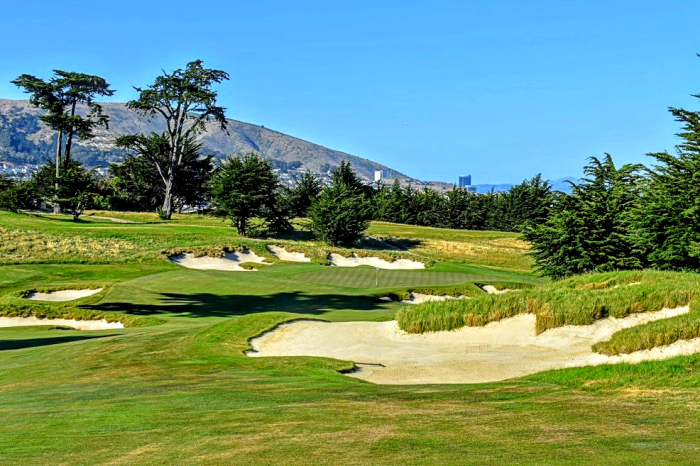

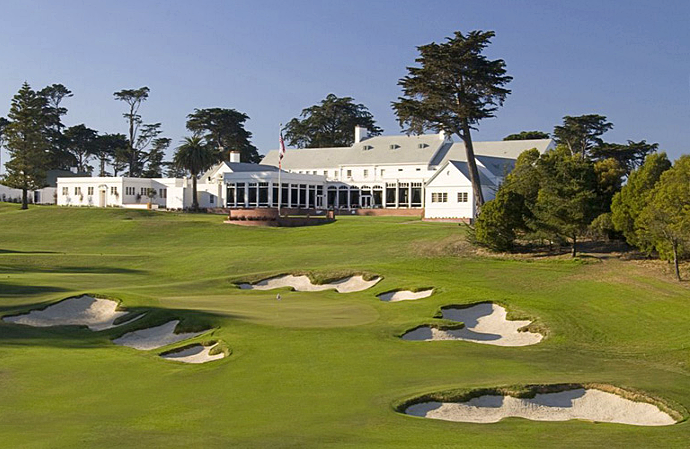
The final approach requires precision to avoid one of the seven greenside bunkers.

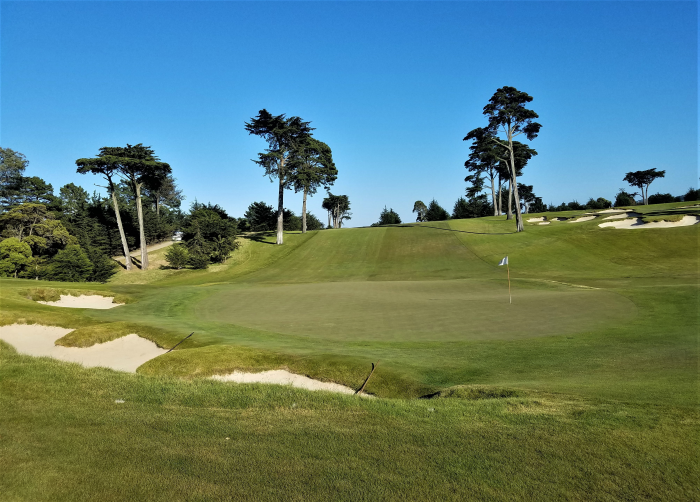
Great view back up the hill on 18.

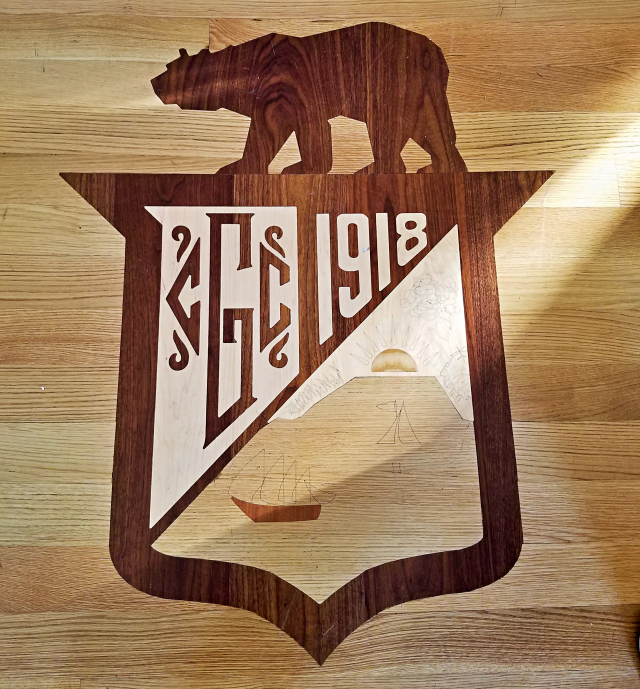
Unlike so many of the finest private golf clubs in American golf, the Cal Club is unassuming in its vibe. The bar and grill has the ideal friendly and casual energy. Guests are made to feel like they belong. In fact, we made it known, our day at Cal Club was our best golf experience of 2019.
We have several people to thank who contributed to this story, Thomas Bastis was very generous with his time and insight on all things Cal Club (including the Kyle Phillips transformation and several of his drone images that are part of this feature). Glenn Smickley for his hospitality and finally Superintendent Javier Campos who hosted us and allowed a couple of turf guys to pick his brain.

